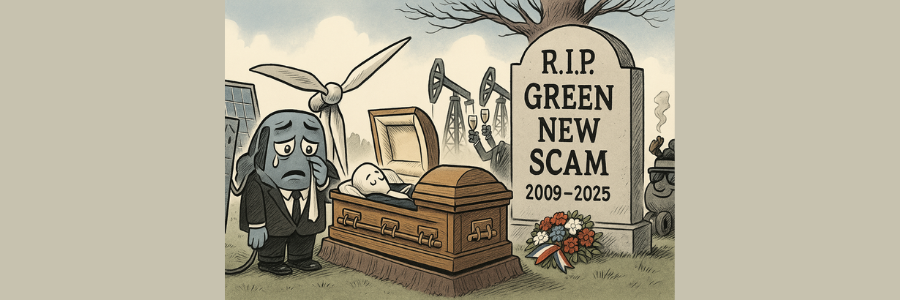
Posted February 06, 2024
By Byron King
King: The Attack - Book Review
I’ve been remiss. There have been times I’ve wanted to do a book review in the Rude, but some other big news has come up.
It’s just one more reason we’re so lucky to have Byron King write the Rude occasionally.
Today, he brings you his review of The Attack by Kurt Schlichter. Here’s what Byron wrote in the email accompanying this piece:
Great book. Gripping. Fast read. Could barely put it down. Rooted in true reality, in that the details all seem to have connections to real news, real events.
Enjoy his extended review below!
King: The Attack - Book Review
Where will you be this coming August 27, not quite seven months from now? Have you made vacation plans? Will you be at the beach? Or come next August, will you be home, or working at your job, as usual?
Whatever your plans, it’s more than likely that nothing will be too far outside your version of normal, right? Most people have what’s called normalcy bias for a reason. There’s a rhythm to everything, a cycle of life if not of seasons.
It’s easy to get used to things happening more or less like they always seem to occur. The sun rises and sets. Nothing changes too much from day to day, right? Well, no.
Columnist-writer-lawyer-Army veteran Kurt Schlichter has just published another of his adrenaline-pumping works of gunpowder fiction, a new book entitled The Attack, a Novel of Terrorism in America. And this one lays out the ultimate black swan event.
If Schlichter's hypothesis is anywhere near true, then this summer, beginning on August 27, you’re in for one hell of a day. The stock market, the dollar, the price of oil and gold, etc., will all be the least of your worries.
Indeed, come the Attack (yes, capitalized on purpose), you are in for three days of hell on earth, followed by cultural, social, political, economic, legal, and military changes that will shake the country and world in ways not seen since… hmm. Take the worst moments of, say, 9/11, World War II, the Great Depression, and the Civil War, and mix them all up.
As I mentioned, the book is fiction. But it’s factual fiction, with nothing in it that lacks rock-solid basis and non-trivial probability rooted in current reality. So first… the news.
Yes, “News”
“Migrant encounters have in recent months jumped to unprecedented levels,” said a recent article in Government Executive, a Washington, D.C.-based news source focused primarily on matters of interest to federal employees.
Characteristically, the headline was: Hiring and pay reforms accompany staffing surges in bipartisan border deal.
In other words, Government Executive does not present the collapse of the U.S. southern border and subsequent open migration as a story about how brigade-sized numbers of military-age males are daily invading the country. Rather, the news site explains how dealing with the current, politically vexing border issues will lead to more hiring and better pay for government workers.
Here’s another excerpt: “The departments of Homeland Security and Justice would see significant staffing increases, hiring flexibilities and pay reforms under a border security and foreign aid package that a bipartisan group has unveiled in the Senate after months of negotiations… (blah-blah-blah).”
Then again, even news about federal hiring and pay scales requires some basic context. Thus did Government Executive note, deep within its report, that:
“In December, encounters at the southwest border reached 10,000 per day and eclipsed 300,000 for the month for the first time ever. The backlog at immigration courts has topped 3 million cases and USCIS’s (U.S. Citizenship and Immigration Service’s) asylum backlog is nearing 1 million, both also all-time records.”
Who Are These Migrating Record-Setters?
Okay, back to Schlichter, who postulates that some small fraction of these 300,000 “encounters” per month, and not a few of those many millions already here, are individuals who hold, shall we say, ill-intent towards the U.S. and its population.
That is, out of the millions who have crossed the border in the past three years (longer, to be accurate, because it’s not just a Biden administration thing), some of them are likely hostile. They’ve come to America to connect with accomplices, settle in, case-out the target sets, await their signal, and then cause big trouble with guns and other explosive devices.
Begin with basic numbers. According to official and semi-official accounts, well north of 15 million people are illegally in the U.S.; I’ve heard numbers like 25 million and more. They overstayed their visa, if not walked in and claimed asylum under false pretenses, or just plain snuck in and “gotaway,” to use the government’s term.
In Schlichter’s book The Attack, the date is 2029, a bit over five years after the events of August 27, 28, and 29 of – apparently – this year. In 40 chapters covering 320 pages, the writer presents a historical look back at what occurred.
Schlichter tells the tale through a series of personal accounts, each presented as a transcribed interview with someone who played a role in events. This method of history-telling is similar to that of the late Studs Terkel, who wove deeply insightful narratives using personal anecdotes and reminiscences.
For example, Schlichter lays out the strategic-operational idea behind The Attack (as it became known) by presenting an interview with a devout man who clearly explains his vehement, anti-American religious motivation. Another interview comes from a person in the Middle East who specialized in moving large amounts of money between continents with nary a trace. And we see an interview with a Mexican fellow who made a lucrative career smuggling large numbers of people across the U.S. border, collecting big fees in the process.
On the kinetic side, Schlichter’s future historian presents an interview with an arms merchant who figured out how to move tens of thousands of automatic weapons, plus a small mountain of ammunition and rocket-propelled grenades (RPGs) into the U.S., past the eyes and drug-sniffing dogs of federal agents.
Another interview references how, over several years pre-Attack, entire train cars of explosive ammonium nitrate fertilizer went missing from American railway sidings. And a chapter offers disturbing insight from a survivor who explained how not-too-difficult it was for bad actors to inflict severe damage to the electric power system.
Three Days in August
Looking back from Schlichter’s futuristic 2029 “Attack” reconstruction, everything unfolded over three well-designed, pre-planned days, each phase of the operation commencing at noon, Eastern time.
Day One involved the sudden outbreak of mass casualty shootings and targeted assassinations (spoiler: two Supreme Court justices whacked) across the nation, mostly in public spaces.
Day Two had more mass casualties, but this time, in residential areas, people would be at home, sheltering in place after Day One.
Day Three was a nationwide assault on critical infrastructure, ranging from electric power and petroleum refining to food distribution and key transport nodes.
Consider the kickoff event on August 27. Out of the blue, America experienced hundreds of simultaneous attacks on soft civilian targets across the nation, often as not in so-called “gun-free zones” where people are all but guaranteed to be unarmed.
In the leadup, U.S. intelligence agencies had nary a clue, and because of this, law enforcement was overwhelmed at all levels. It turns out that The Attack was a dark operation; it required almost no ongoing command and control, hence almost no telltale signal intelligence, such as phone calls, texts, emails, or the like.
At the appointed hour, the perps were already in place, armed-up, and awaiting their “go” message. They headed out and died for their God in a fanatical blaze of glory, although methamphetamines boosted many to buck up their courage and resistance to getting shot, just like what happened in Israel last October 7, 2023.
Indeed, in the case of Schlichter’s fiction mirroring recent combat reality, the cell structure of the Attack was such that no more than five or ten people ever knew much more than their specific assignments. Almost none of the 10,000 or more attackers knew that their efforts were part of a massive, national-scale assault on America orchestrated from abroad. (Schlichter explains it all, of course, including how the eventual American body count exceeded 175,000, more American deaths than in all of World War I.)
Through the method of oral history, Schlichter presents interviews of street-level cops, EMTs, FBI agents, homeowners with guns, homeowners without guns, and even a Chinese intelligence “sleeper” agent who was caught in a Los Angeles crossfire and reverted to his own special forces training to protect himself.
Then, after a day of carnage in the streets came Day Two when federal, state, and local governments instructed Americans to stay home and hunker down. Anticipating this, Attack coordinators planned for another vast wave of willing zealots to move into suburbs and gated communities to kill more civilians. Again, America experienced a coast-to-coast shootout with massive casualties.
Finally, on Day Three, attacks on infrastructure began, particularly on the national electrical grid and other critical targets like oil refineries. By nightfall, much of the country was blacked out, and over one-third of the nation’s petroleum refining capacity was in flames.
Predictably, in the aftermath of these attacks, and due to a lack of electrical power and diesel fuel, food quickly spoiled in warehouses, and much of the economy simply collapsed.
Yes, of course; kill the energy supply, and most of the rest of everything grinds to a halt.
Apocalyptic Fiction, Based on Outrageous Reality
Per Schlichter’s fictitious account, and as the horrid, gruesome events unfolded, America’s elderly president fell and broke his hip; he was instantly hors de combat.
Sensing the opportunity, the ambitious Vice President seized her moment and gave a moronic, word-salad, nothing-burger speech that shocked even the most ardent supporters within her party.
Then, with American leadership in complete shambles at the very top of the power structure, politics unfolded in ways that were strictly legal yet stranger than fiction – although, yes, this is all fiction.
Schlichter is anything but one-dimensional in his writing. He’s fresh and colorful. He can turn a phrase. He’s even literary (and I mean that in a good way). In other words, the reader hears no single-note symphony of gun-toting, bang-bang, terrorist-shooting, deplorable MAGA-ism from this scholar of both war and peace.
In fact, Schlichter’s fictional accounts offer a number of thoughtful, revealing explanations of The Attack from many anti-American perspectives; apparently, they are real quotes from real people out in the real world.
A Harvard history professor explains how, over many years, U.S. universities went academically and politically, America-hating crazy. A former Antifa member explains why she joined up with the attackers. A radical lawyer explains why she remains on the side of the attackers and still hopes to see the downfall of “colonizer” America. You can (and should) disagree with these people, but Schlichter presents their case in a way that at least allows one to see where they’re coming from. Know the enemy, right?
And again, it’s fiction-fiction-fiction. But it’s also fact-fact-fact-based. And if you don’t like what Schlichter is writing, then compose your own book. It’s still a free country.
But be sure to deal with those facts, especially the stubborn, troublesome ones. Deal with that wide open border, across which any and every form of humanity has been crossing unimpeded for three years and more. Deal with the vast scale of unknowns just on this point alone. Who are these people? What are their names? What are their backgrounds? What is their education? What is their prior military training? What are their motivations?
Meanwhile, how many and what kinds of new immigrants can the U.S. absorb? Because, as a nation, we’re long past those tired old words of Emma Lazarus, that artifact trope about America taking in “the tired, the poor, the huddled masses.”
In other words, this is no longer a big continent with wide-open, empty spaces to fill. We dwell in a modern, deeply indebted, fast-failing welfare state with many profound problems that never seem to come even close to resolution; schools, hospitals, highways, housing, and much else come to mind.
Now, take the reality of not knowing who is crossing our open border and couple it with even a small risk of a dedicated internal army staging an Attack. Go ahead, think it through. Or just read Schlichter’s book.
Again, this is a work of fiction. But it’s also a warning, a scenario against which to plan.
And no, The Attack has not happened… not yet. But if it occurs – when it occurs – nobody can say that we were not warned.
Thank you for subscribing and reading.

Go Big. Go Homer.
Posted October 31, 2025
By Sean Ring

Powell Cuts, Then Waffles
Posted October 30, 2025
By Sean Ring

Bill’s New Boogeyman
Posted October 29, 2025
By Sean Ring

The End of the Green New Scam?
Posted October 28, 2025
By Sean Ring

America’s Golden Perimeter: The New Monroe Doctrine
Posted October 27, 2025
By Sean Ring
